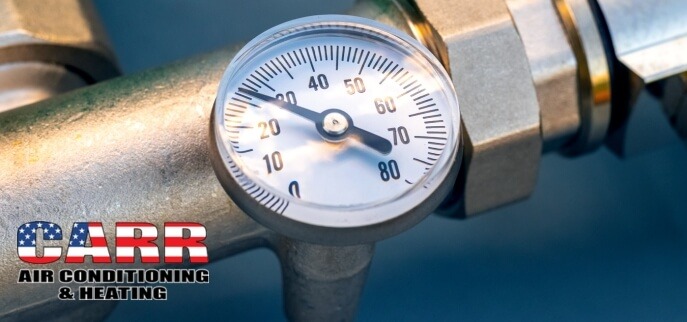Winter is here, so what is the best temperature to keep inside your home?
As winter’s frosty embrace tightens its grip, the desire for the ideal indoor temperature becomes a common challenge for homeowners. Determining the best temperature for your heater in winter is a detailed decision influenced by factors such as personal comfort, energy efficiency goals, and overall well-being. Today, we will delve into the considerations and recommendations surrounding the best temperature to keep your heater warm during the chilly winter months.
Comfort and Health: The 68-72 Degree Sweet Spot
Experts generally advise maintaining a thermostat setting between 68 and 72 degrees Fahrenheit while you’re at home and active. This temperature range strikes a balance between comfort and energy efficiency. It provides a cozy environment for most individuals, preventing the discomfort associated with a winter cold while ensuring a reasonable energy consumption level.
This sweet spot is not arbitrary; it considers both physical comfort and the potential financial burden of excessive heating. Keeping your indoor space within this range supports a warm and inviting atmosphere, enhancing your overall well-being during the colder months.
Energy Efficiency
While the pursuit of comfort is crucial, it’s equally important to be mindful of energy efficiency to prevent skyrocketing heating costs. Each degree above the recommended range can significantly impact your energy consumption and utility bills. By adhering to the 68–72-degree guideline, you strike a delicate balance, ensuring a warm home without compromising your energy consumption and bills.
Programmable Thermostats: Precision and Efficiency
Enter the programmable thermostat, a game-changer in the quest for an optimal indoor temperature. These smart devices allow you to schedule temperature adjustments based on your daily routine. For instance, you can program the thermostat to lower the temperature when the house is empty or during sleeping hours and increase it before waking up or returning home.
This level of precision enhances both comfort and energy efficiency. You get to enjoy warmth when you need it most, and the thermostat automatically adjusts to conserve energy when heating is less critical.
Nighttime Settings: Sweet Dreams and Energy Savings
Nighttime offers an opportunity for additional energy savings. Many people find lower temperatures conducive to sleep, and adjusting the thermostat accordingly can be beneficial. A nighttime setting of around 60–65 degrees strikes a balance between comfort and conservation, aligning with the body’s natural tendency to require less warmth during rest.
Occupancy and Zoning: Tailoring Heat to Need
For homes with multiple zones equipped with individual thermostats, consider leveraging occupancy and zoning strategies. Adjust temperatures based on room usage, keeping unused spaces cooler and directing heat to occupied areas. This targeted approach optimizes energy use, avoiding unnecessary heating in unoccupied rooms.
Insulation and Sealing
Regardless of the chosen temperature setting, the efficiency of your heating system hinges on proper insulation and sealing. Ensure that doors and windows are tightly sealed and that your home is adequately insulated to retain the warmth generated by your heater. This proactive step minimizes energy waste, promoting a consistently warm indoor environment.
Contact Carr AC for Heater Repair, Maintenance, and Installation Services
Determining the best temperature for your heater in winter involves a thoughtful blend of personal comfort and energy efficiency. The 68–72-degree Fahrenheit range stands out as a well-researched and recommended guideline, providing a comfortable living environment while keeping energy costs in check. Integrating programmable thermostats, adjusting temperatures during the night, and implementing occupancy-based zoning strategies further refine this balance.
Remember, the goal is to create a warm and inviting home that aligns with your lifestyle while maintaining a consciousness of energy consumption. Regular heating system maintenance, coupled with proper insulation and sealing, contributes to an energy-efficient home that remains comfortable throughout the winter season. By adopting these practices, you can navigate winter with confidence, striking the right balance for a warm and cozy indoor space.
If your heating or AC system needs repairs or maintenance, contact Carr AC for fast and efficient services.

